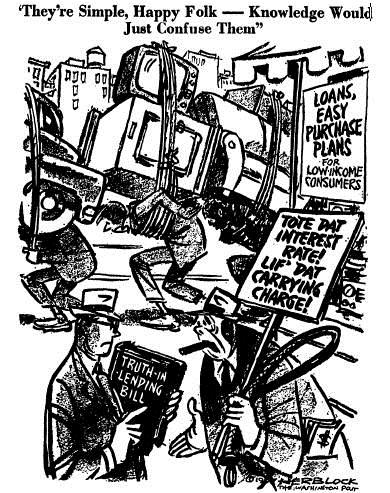Banking and Credit
Since the Great Depression, Congress has passed a series of laws to preserve stability in the banking and credit industries, protect consumers from unfair and deceptive practices and make affordable credit available to middle class and low-income families and small businesses. Beginning in the 1980s, the deregulation of financial institutions has fed speculative booms and devastating busts. Privatization of low-cost government credit for student loans and mortgages and weaker consumer protections has driven up the cost of credit and put consumers at risk.
Commentary
Information is power… and that’s the problem
Why #OccupyWallStreet?
Cry Wolf Quotes
It is simply wrong-headed policy…[Federal and state banking regulations] require or aggressively nudge banks into subsidizing parts of the community [The proposals] would only aggravate the problem.
I think that every single company that offers a credit card is reassessing its cost….reassessing what they do and how they do it.
[The bill], while well-intentioned, will increase the cost of credit for consumers and small businesses across the country, result in less access to credit for consumers and businesses alike, and may further roil the securities markets -- all at a time when our economy can least afford it.
The CRA, by encouraging loosening underwriting standards, may have contributed to the massive increase in foreclosure rates.
Related Laws and Rules
Evidence
-
Banking Lobby's Warnings About CARD Act Disproven
What happened after credit card reform bill passed Congress in 2009 (it worked).
-
The Successes of the CARD Act
The Consumer Financial Protection Bureau describes exactly what the act did and what the effects were one year later.
Backgrounders & Briefs
A Timeline of the CARD Act
An interactive timeline of credit card reform.
Resources
The National Community Reinvestment Coalition works against unfair lending and banking practices, particularly those targeted towards low and middle income families.



